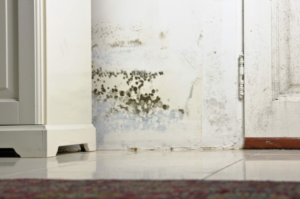Common Signs Of Mold Damage In Your Home
 Did you know that over half of the homes in the United States have a mold problem? When you can see mold growing, it is easy to diagnose a mold problem and get the ball rolling on getting it removed. However, mold tends to lurk where it cannot be seen, putting all those in the home at risk of exposure. The Center for Disease Control and Prevention warns that exposure to mold can cause a lot of health problems from allergic reactions, to chronic lung illnesses, infections, and other respiratory problems. We at Harper Special Services would like to introduce some of the more common signs to look for in your home in Savannah that could indicate you have a hidden mold problem.
Did you know that over half of the homes in the United States have a mold problem? When you can see mold growing, it is easy to diagnose a mold problem and get the ball rolling on getting it removed. However, mold tends to lurk where it cannot be seen, putting all those in the home at risk of exposure. The Center for Disease Control and Prevention warns that exposure to mold can cause a lot of health problems from allergic reactions, to chronic lung illnesses, infections, and other respiratory problems. We at Harper Special Services would like to introduce some of the more common signs to look for in your home in Savannah that could indicate you have a hidden mold problem.
- Musty smells and odors
One of the biggest signs of hidden mold in your home is the smell. As mold grows, it gives off a very musty, damp, earthy smell. If you notice an unusual lingering smell in your home that you cannot find a source for, you should have the area checked for mold growth.
- Signs of visible mold
Visible mold is clearly a sign of a mold problem, however not all visible mold growth is obvious. Mold will begin growing and spreading in small amounts that may look like tiny spots and speckles, closely resembling dirt. The problem is these small patches can grow and spread very quickly if not remediated right away. Since mold can appear white, green, black, brown and even gray, and can be in the form of threads, spots, clusters, and fuzzy in appearance, it can be tricky to correctly identify visible mold. If you notice any abnormal spots on your walls, floors, ceilings, or anywhere else in your home, consider having it evaluated for mold.
- History of water damage
Even the smallest water damage; a pinhole leak in a pipe, moisture in the air, a leaking shower, condensation on surfaces of the home, or areas with pooling water, can lead to mold growth. When combined with water, the structural materials of our home like wood and drywall create the perfect environment for mold to grow. If your home has ever endured major water damage, such as flooding, it is highly likely that mold would have started to grow. If you are unsure whether your home has had water damage before, some signs of previous exposure to water are water stains or discoloration on walls, floors, or ceilings, peeling, bubbling, or cracking of paint, bowing, bulging, or warped surfaces and floors. Regardless of the extent, location, cause, or size of water damage, mold is likely to be a secondary problem so make sure your home has been checked for mold following any type of water damage.
- Allergic reactions or symptoms of mold exposure
Mold exposure can cause a lot of respiratory symptoms including coughing, sneezing, red itchy eyes, sore throat, runny nose, shortness of breath, fatigue, headaches, asthma, headaches, and congestion. If these symptoms are not common for you, or any other member of your household, and seem to be present while in the home, then you could have an underlying mold problem.
Mold Damage Cleanup In Savannah Ga
Prolonged mold exposure can have serious health effects; so do not hesitate to have your home checked if you are noticing symptoms.